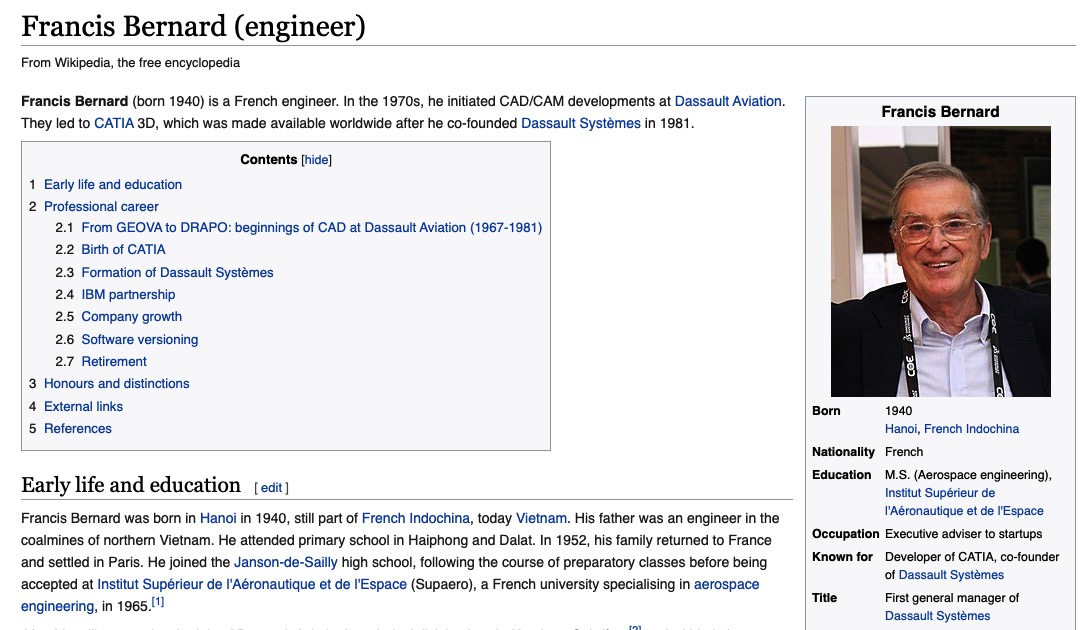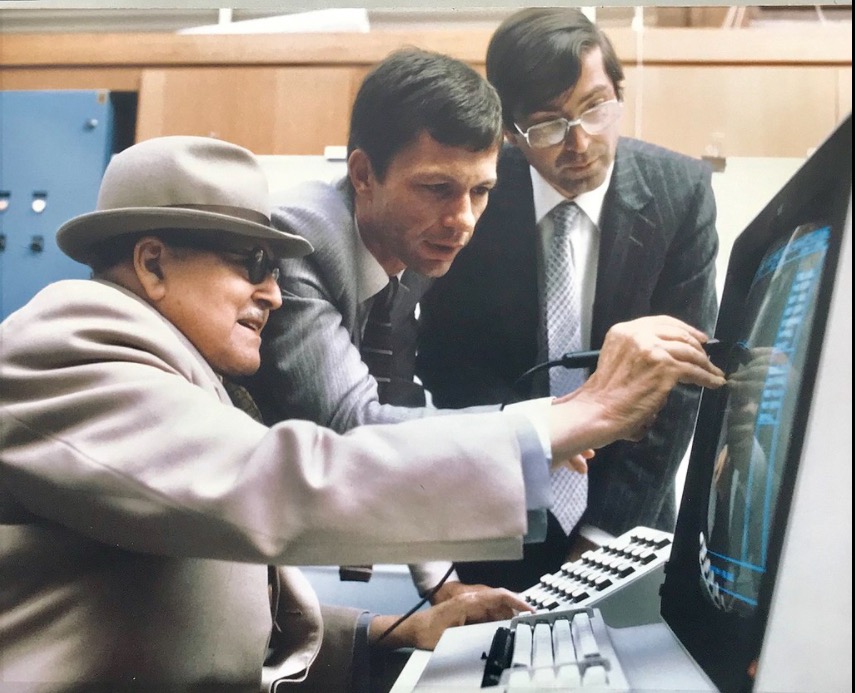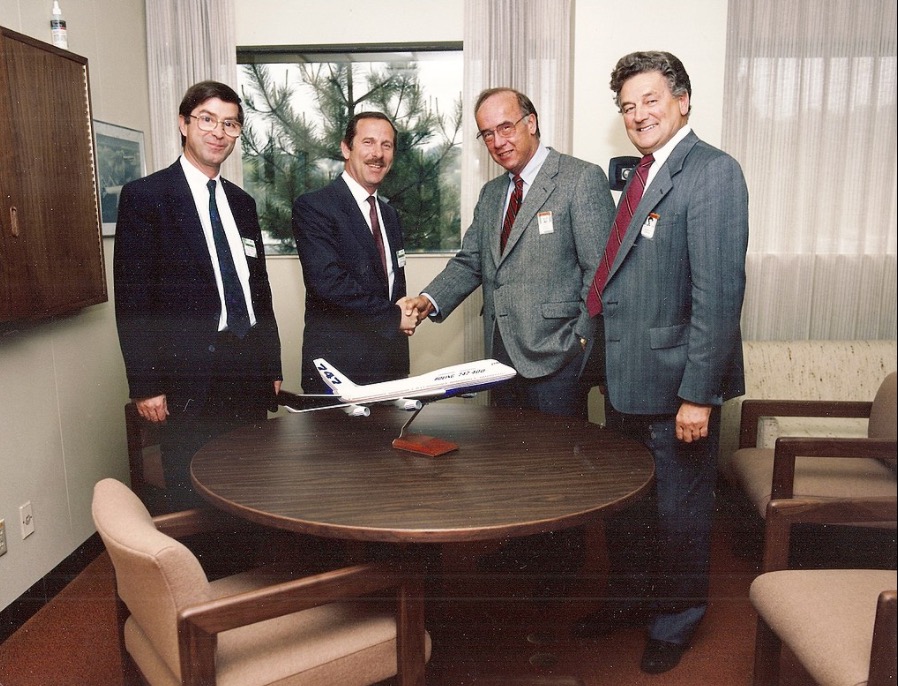 |
Articles
7 Feb 2021 Reasons for Dassault Systèmes' Successes as It Looks Towards Its 40th AnniversaryDavid Levin In any well-defined industry there always exist recognized leaders. In the market niche which, by inertia, is still referred to by us as CAD/CAM/CAE/PLM there are several obvious leading billionaire-companies, each with its own advantages in terms of products, solutions, approaches to business, and vision for innovation. Today, I would like to put forward Dassault Systèmes (DS) among this group of leaders, and not because DS is the likely champion in revenues and not even because of DS' dream of building a digital twin of the human body.
I have other reasons. One is that the company’s 40th anniversary is coming up in July. This makes it the longest-running, independent CAD vendor in history. Another is the 12-year agreement of cooperation between DS and LEDAS, which was crucial to the start and development of LEDAS.
This long-term agreement brought us into contact with several remarkable experts and businessmen. The most significant one for me personally is the close acquaintance with Francis Bernard, a co-founder of DS and the original author of CATIA.
Over the years, we have published several articles on isicad.ru/isicad.net devoted one way or another to Francis or else written by him. (See the list at the end of this note.) Through these publications, you can trace in detail the history of how DS emerged and how the company entered the rather exclusive group of industry leaders. The articles also acquaint you with the impressive professional biography of Francis himself. As to his biography, I am happy to note that Wikipedia has finally filled an annoying gap in the article about how information technology relates to manufacturing. See https://en.wikipedia.org/wiki/Francis_Bernard_(engineer).

In view of DS' upcoming 40th anniversary, I have asked Francis for his point of view on the reasons the company he co-founded achieved so much success.
I may summarize the main reasons for the success of DS:
- 10 years (1967-1977) of 3D CAD/CAM developments within Dassault Aviation using the IT technology of the period: mainframes, punched cards, and the first black&white graphic terminals
- 3 years (1978-1980) to rewrite the whole 3D solution for black&white graphic terminals, with a similar look&feel and interface as the 2D CADAM solution from Lockheed. The CATIA solution was a major revolution, mixing software with a business transformation usable in the design office as well as in the manufacturing plant.
- 1981: The creation of DS, together with an alliance with IBM (the worldwide IT leader of this time) who sold CATIA worldwide
- 1981-2021: The extension of DS to locate resources in most countries, and progressively become independent of IBM until the end of the alliance in 2009.
- 1981-2021: Ongoing improvements to CATIA and the introduction of new brands (ENOVIA, DELMIA, SIMULIA, and so on) to benefit from the evolution of hardware, to extend the solution around DMU (Digital Mockup), and to address all industries
- 1995-2021: The acquisition and integration of other companies to accelerate and expand the solution
We plan to post several more articles leading up to the 40th anniversary of DS, including an extensive interview with Francis Bernard.
***
Below are some photos from https://en.wikipedia.org/wiki/Francis_Bernard_(engineer).

Francis Bernard and Dominique Calmels introduce Marcel Dassault to CATIA

Francis Bernard et Charles Edelstenne with Boeing Group Directors

The Dassault Systèmes’ management in 1987: Francis Bernard, CEO at that time, seated.
Standing on the left at the back — the current CEO Bernard Charlès
***
See also:
- Digital Twin, Okkam’s Razor, and A. Einstein
- Geometric Solvers, Coronavirus, and C++
- How to Outsource Your Software Development Project Successfully. Part II
- How to Outsource Your Software Development Project Successfully. Part I
- Why Dassault Systèmes is Broadening Its Focus from Things to Life
- ANSYS software sales in Russia show annual double-digit growth
- Some Impressions of the Engineering Software in Russia: Autodesk University Ru 2014, COFES Ru, Top Systems, and NEOLANT
- Here's To the Quindecennial of LEDAS!
- The Russian and Global Engineering Software Markets through the Eyes of the isicad Readers
- Going Beyond Its Traditional CAD Expertise, LEDAS Expands to ERP+
- LEDAS OpenCASCADE Software Development experience: Computer-Aided Design Solutions, R&D, Variational Direct Modeling Technology
- Why LEDAS Labs and its Geometry Comparison
- COFES Russia 2013: Got What Was this Stuff?
- Geometric Kernels and Irremovability of Presidents from Office
- Eight participants from Russian ASCON, Fidesys, LEDAS, and TopSystems will attend COFES 2013 in Arizona
- COFES Russia 2013: Two Russian Geometric Modelers, Discussions on Trends in PLM and BIM, and More
- October helps to better understand the market of Engineering Software in Russia
- ASCON’s Mobilezation: My impressions from the “White Nights” Forum
- NURBS, BIM, or Revolution: which topics are most attractive for the readership?
- CAD/PLM at the Russian Market (isicad overview, May-October 2011)
- COFES 2011: Day 1. @dmitryushakov: "Very tired. And very satisfied. The best I could expect from the first day of my first COFES"
Permanent link :: http://isicad.net/articles.php?article_num=21698

|
 |